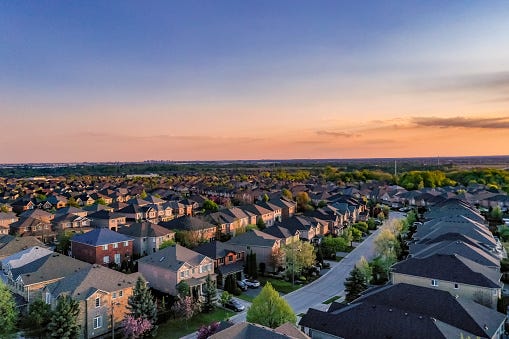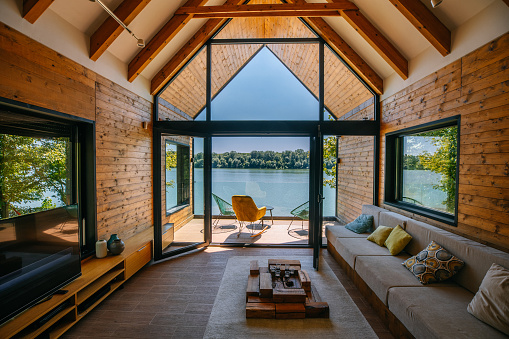Luckily real estate is one of the few sectors that benefits from rising rate hikes.
As rents rise, home prices ride along the wave of inflation offering utility acting as a hedge. Plus mortgage rates are influenced by the 10-yr Treasury bond yield so the Fed’s rate-hike cycle won’t have a drastic effect.
In this case, it’s suggested to take out an ARM (adjustable rate mortgage) rather than a fixed 15 or 30-year mortgage so you can refinance before it adjusts. Since interest rates have been declining in lockstep since the 1980’s, this is a more financially sound move.
The Fed just set its first rate hike since 2018 and plans on enacting 6 more of around 25 basis points each. Although higher borrowing rates entail less margin buying, more cash-rich, remember, it signals the economy, labor markets, employment, and wages are strong and now need to cool down before hyperinflation occurs. As long as the Fed engineers a soft landing, there will be less of a chance of a boom-bust cycle in the works.
Since less than a third (30%) of U.S. home purchases in 2021 were fully paid in cash and the national savings rate has plummeted from its pandemic high at almost 50%, Americans aren’t full of liquidity as they used to be during the pandemic since they took on more leverage and bought on margin to take advantage of the extraordinary gains and dips in the market.
Beyond the decision of how much cash deposit to put down on a home, the age-old question is always whether to rent or to buy.
You can check out my article here on the recap.
To sum it up, renting is suggested for those:
-With an abundance of supplemental income streams and disposable income on the side, net worth equivalent to ~20x annual living expenses, ~10x annual gross income
-Those who plan on living in the residence for less than 5 years and are unsure about their location preferences, family plans at the moment
-Stable and recurring income rather than various unknown inconsistent side hustles-mortgage lenders consider one more risky if they are self-employed no matter the paycheck and popularity
If you’re planning on being a homeowner, it is almost the opposite, besides the disposable income and cash part. Always keep an emergency savings fund equivalent to 6–12 months of living expenses regardless and especially when those repairs and leaking faucet bills come out of nowhere with a starter home.
As a homeowner, you need to be wealthy not rich as you build equity in your home over the long term in an inflationary proof asset. The gains will take time to pay off and compound but are well worth it with the nest egg in place.

Rent vs. Buy Conversion
The average median national home price is currently at ~$365k. The median cost of a home is roughly 6x the median income, up 3x from the 1970s. Due to these extraordinary hikes, millions of Americans are unsure if their home is worth purchasing due to one deciding factor of them all: location.
The location of a residence is the deciding factor in the price point. It indicates the quality of schools, access to employment, transportation hubs, relative safety, demographics, and level of income distribution. Coastal cities such as NYC and San Francisco have the highest home prices because of their access to major hubs, entertainment, lucrative opportunities, employers, and top 1%+ incomes.
Currently, as prices are hot at the top of the housing market with low inventory, froth, and speculation, the price-to-rent ratio is handy in this situation. To gauge whether an area is fairly valued/priced or about to burst in a given area, divide the median home price by the median annual rent. Generally, a price-to-rent ratio higher than 21 means it’s cheaper to rent in that area.
For example, the price-to-rent ratio in San Francisco is over 50, the highest in the country. So for every $1,000 you’d spend in rent, you’d have to pay $601,362 to buy something in that same range. So at that rate, it would be less expensive and more economically efficient for you to rent than to own, as the monthly mortgage payment would be over $10,000.
Now compare San Fran to Nebraska, where every $1,000 you spend in rent would cost $150,340 to buy something comparable — $1,000/mo. In rent vs paying a mortgage on a place, the home purchase comes out to be less since the price-to-rent ratio here is 15.7.
The price-to-rent ratio helps break down a location’s true value and indicates to a potential homeowner or renter if they are getting their bang for their buck.
Luckily with steeper mortgage rates comes fewer marginal borrowers, less competition, and more favorable buyers. When in doubt, don’t seal the deal without confirming you aren’t paying more for less. The other way around is fine!

